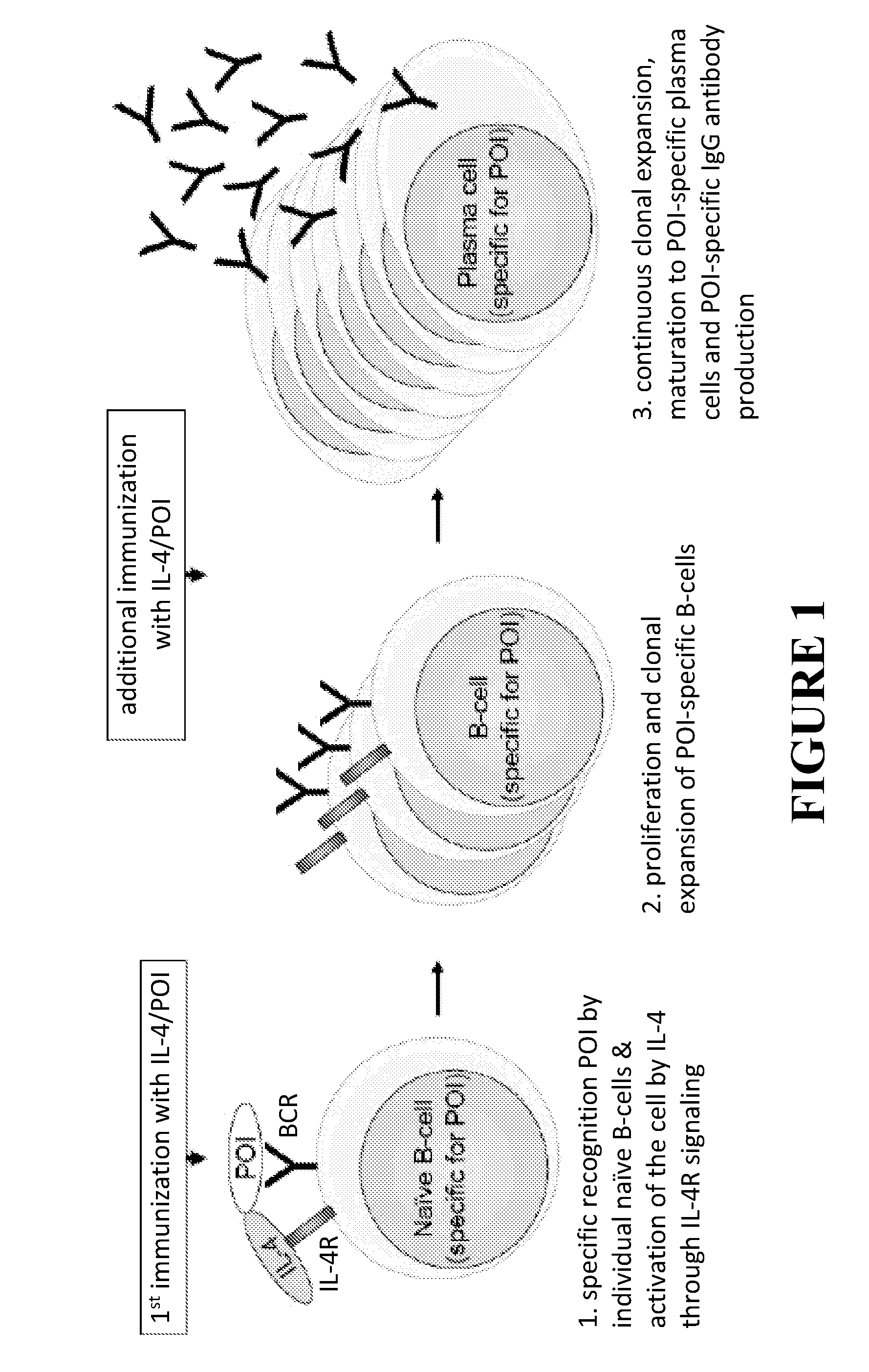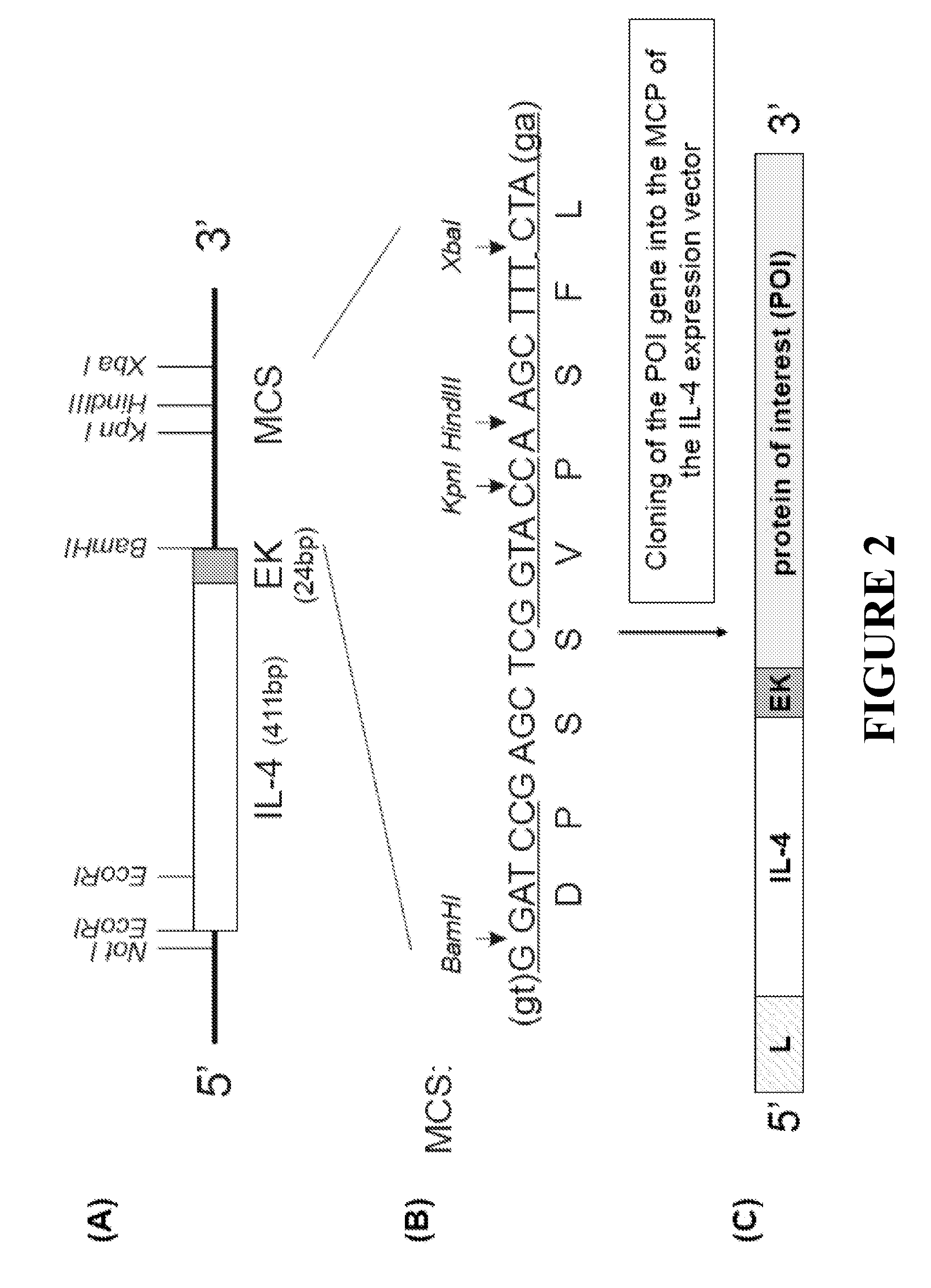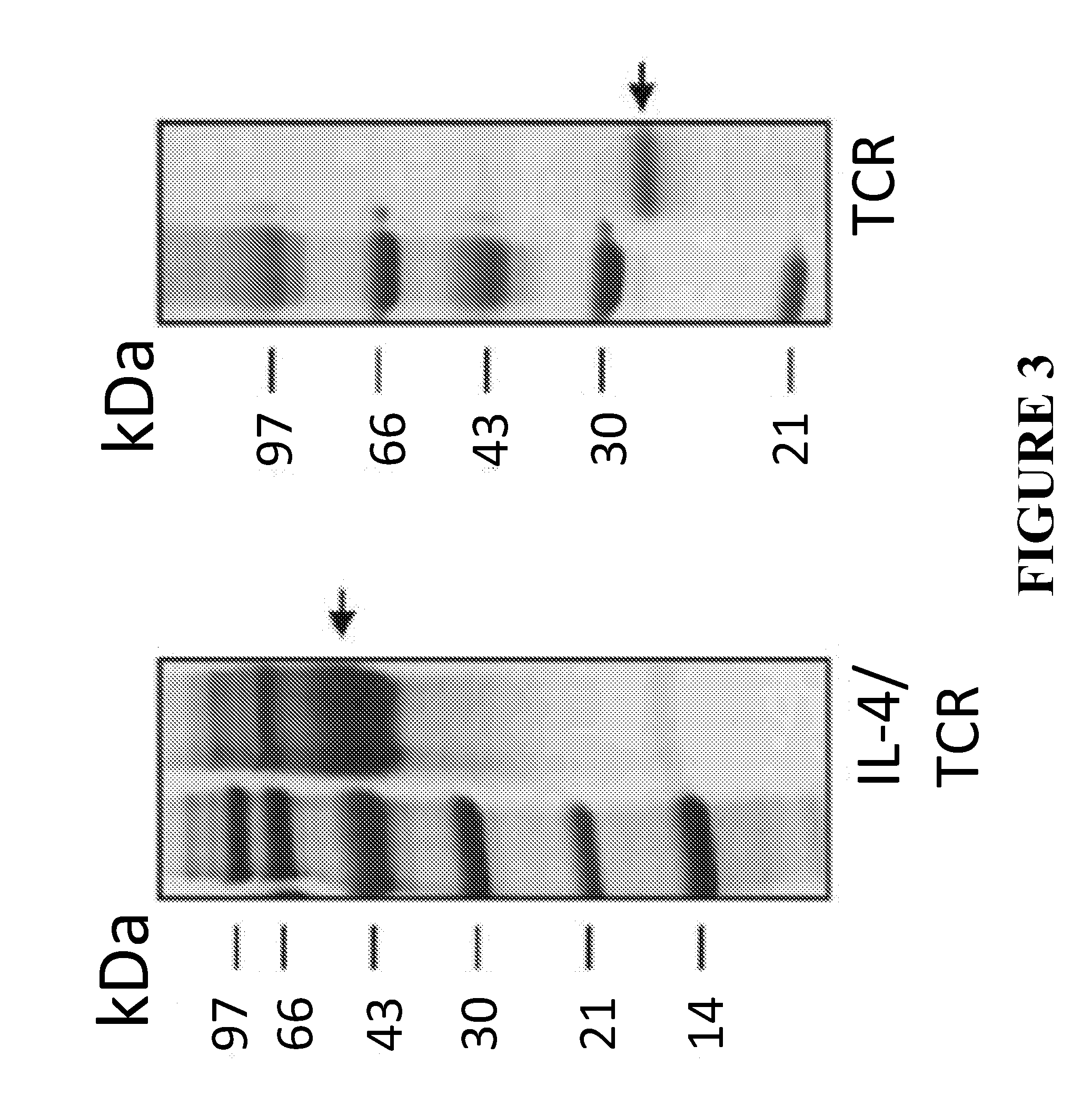Methods for monoclonal antibody production
a monoclonal antibody and production method technology, applied in the field of efficient production of monoclonal antibodies, can solve the problems of low immunogenicity, many proteins and peptides that are difficult to be produced and/or effectively secreted in recombinant form, and it is difficult to generate monoclonal antibodies against such proteins and peptides
- Summary
- Abstract
- Description
- Claims
- Application Information
AI Technical Summary
Benefits of technology
Problems solved by technology
Method used
Image
Examples
example-1
[0058]This Example describes the general methods used in the experiments described in Examples 2-5.
[0059]Generation of the IL-4 Expression Vector
[0060]A complete equine IL-4 cDNA including the leader sequence was amplified by PCR using the forward (5′ GCGGCCGCATGGGTCTCACCTACCAACTG 3′, SEQ ID NO: 8) and reverse (5′ CGTCGTACAGATCACACTTGGAGTATTTCTCTTTC 3′, SEQ ID NO: 9) primers. A complete gene sequence encoding an enterokinase (EK) cleavage site, (Asp)4-Lys (SEQ ID NO: 7) (Anderson et al., 1977), was designed at the 3′ end of the IL-4 by an additional PCR using the same forward primer and an EK reverse primer (5′ CCGGATCCTTATCGTCATCGTCGTACAGATC 3′, SEQ ID NO: 10). The amplification resulted in an IL-4 / EK cDNA fragment. The IL-4 forward primer included a NotI site (5′) and the EK reverse primer included a BamHI site (3′) for subsequent cloning of the IL-4 / EK cDNA into the multiple cloning site of a mammalian expression vector with a CMV promoter. A multiple cloning site at the 3′ end o...
example-2
[0071]This example shows that the new IL-4 / POI expression system resulted in increased expression of the recombinant POI. IL-4 / POI and other available expression system are compared in FIG. 4 for POI being a Toll-like receptor (TLR) protein (SEQ ID NO: 11) and in FIG. 5 for POI being a tissue factor (TF) cytokine (SEQ ID NO: 12).
example-3
[0072]Example 3 shows that the secretion of the POI was enhanced by using the new IL-4 / POI system compared to expressing the same protein (here TF) in another available expression system (FIG. 5). Secretion of TLR2 (toll-like receptor 2) was also shown to be enhanced through the use of the IL-4 / POI system. IL-4 is a secreted protein. The use of IL-4 and its leader peptide contributed to the secretion of the entire IL-4 / POI, even if the POI itself is not a secreted protein. In contrast, neither TF nor TLR2 was secreted by using an IgG fusion or an His-myc tag. Secretion of the POI is preferred during expression because the POI is easier to purify from supernatant and its structural confirmation is less modified because of the simplified purification process compared to the purification of intracellular proteins.
PUM
| Property | Measurement | Unit |
|---|---|---|
| concentration | aaaaa | aaaaa |
| pH | aaaaa | aaaaa |
| concentration | aaaaa | aaaaa |
Abstract
Description
Claims
Application Information
 Login to View More
Login to View More - R&D
- Intellectual Property
- Life Sciences
- Materials
- Tech Scout
- Unparalleled Data Quality
- Higher Quality Content
- 60% Fewer Hallucinations
Browse by: Latest US Patents, China's latest patents, Technical Efficacy Thesaurus, Application Domain, Technology Topic, Popular Technical Reports.
© 2025 PatSnap. All rights reserved.Legal|Privacy policy|Modern Slavery Act Transparency Statement|Sitemap|About US| Contact US: help@patsnap.com



